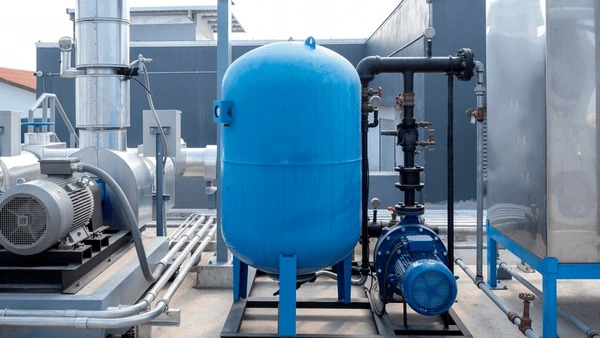Introduction
Carbon-Reduction hillers have emerged as a transformative solution in the cooling industry. These advanced systems are engineered to significantly lower carbon emissions and energy consumption, addressing the dual challenge of achieving operational efficiency and environmental sustainability. By leveraging innovative technologies such as low-GWP refrigerants, energy-efficient components, and integration with renewable energy sources, carbon-reduction chillers cater to a wide array of industries including data centers, healthcare, and manufacturing. Their ability to meet global sustainability standards while delivering exceptional cooling performance makes them an essential component in the transition to a low-carbon economy.
1. Use of Low-GWP Refrigerants on Carbon-Reduction Chillers
Carbon-reduction chillers utilize refrigerants with a lower Global Warming Potential (GWP) compared to traditional hydrofluorocarbons (HFCs). Refrigerants like hydrofluoroolefins (HFOs), ammonia (NH₃), and carbon dioxide (CO₂) are gaining popularity because they reduce direct emissions from leaks or servicing. These eco-friendly refrigerants not only align with international environmental protocols, such as the Kigali Amendment, but also improve operational safety and efficiency in some cases.
2. Energy-Efficient Designs
Energy-efficient components, such as variable speed drives (VSDs), optimized compressors, and high-performance heat exchangers, allow carbon-reduction chillers to adapt dynamically to cooling loads. For example, during low cooling demand, VSDs adjust the speed of the compressor to consume less energy, reducing carbon emissions. Innovations like magnetic bearing technology in compressors minimize friction, further improving efficiency.
3. Integration with Renewable Energy
These chillers can be powered by renewable energy sources such as solar panels, wind turbines, or geothermal systems. By operating on clean energy, they eliminate emissions associated with fossil fuel-based electricity. Some systems are designed to store excess renewable energy in batteries or thermal storage systems for use during peak demand periods, ensuring continuous operation with minimal carbon footprint.
4. Smart Monitoring and Controls
IoT-enabled sensors and cloud-based analytics make these chillers highly intelligent. They monitor various parameters, such as temperature, pressure, and energy consumption, in real-time. Smart algorithms optimize operations by adjusting cooling output based on environmental conditions and system demand. Predictive maintenance features reduce downtime and energy wastage by addressing potential issues before they escalate.
5. Heat Recovery Capability
Carbon-reduction chillers are equipped with advanced heat recovery systems to capture waste heat generated during the cooling process. This recovered heat can be repurposed for space heating, water heating, or other industrial processes, reducing the energy required from separate systems. This dual functionality lowers both operational costs and emissions, making these chillers highly sustainable.
6. Compact and Modular Designs
Modern carbon-reduction chillers are designed with compact and modular components that optimize material use and minimize space requirements. Their modularity allows for scalable operations, meaning industries can add or remove units based on cooling demands. This not only reduces installation costs but also minimizes material waste, further contributing to sustainability goals.
7. Compliance with Regulations of Carbon-Reduction Chillers
Carbon-reduction chillers adhere to environmental regulations and standards such as F-Gas regulations in Europe, the Montreal Protocol, and the Kyoto Protocol. By using eco-friendly refrigerants and energy-efficient components, these systems help businesses avoid fines and reputational risks associated with non-compliance. Adopting such chillers demonstrates a company’s commitment to sustainability and corporate responsibility.
8. Application-Specific Efficiency
These chillers are customized to meet the needs of different industries. For example:
- Data Centers: Precision cooling to maintain optimal server temperatures while minimizing energy use.
- Healthcare Facilities: Reliable and clean cooling for medical equipment and patient comfort.
- Industrial Operations: Tailored to handle high heat loads with minimal emissions.
Each application benefits from targeted features that maximize cooling efficiency while reducing environmental impact.
9. Enhanced Lifecycle Sustainability on Carbon-Reduction Chillers
Sustainability is embedded throughout the lifecycle of carbon-reduction chillers. During manufacturing, companies use recyclable materials and energy-efficient production processes. Throughout operation, these systems prioritize energy savings and minimal emissions. At the end of their lifecycle, components are designed to be easily dismantled and recycled, ensuring minimal environmental waste.
10. Contribution to Carbon Neutral Goals
By significantly reducing energy consumption and using low-GWP refrigerants, these chillers play a pivotal role in helping organizations achieve carbon neutrality. They align with global sustainability initiatives, such as the United Nations Sustainable Development Goals (SDGs), and contribute to net-zero emission targets. Businesses using carbon-reduction chillers can showcase their commitment to climate action, attracting environmentally conscious stakeholders.
Conclusion on Carbon-Reduction Chillers
Carbon-reduction chillers are not just cooling systems; they are a strategic investment in environmental sustainability and operational excellence. Through the adoption of eco-friendly refrigerants, smart monitoring capabilities, and energy-saving designs, these chillers play a pivotal role in minimizing the environmental impact of cooling processes. Beyond reducing emissions, they support businesses in aligning with global climate initiatives, such as carbon neutrality and net-zero goals. As industries worldwide adopt sustainable practices, carbon-reduction chillers offer a powerful way to reduce environmental footprints while maintaining reliable and efficient cooling solutions, ensuring a sustainable future for generations to come.

